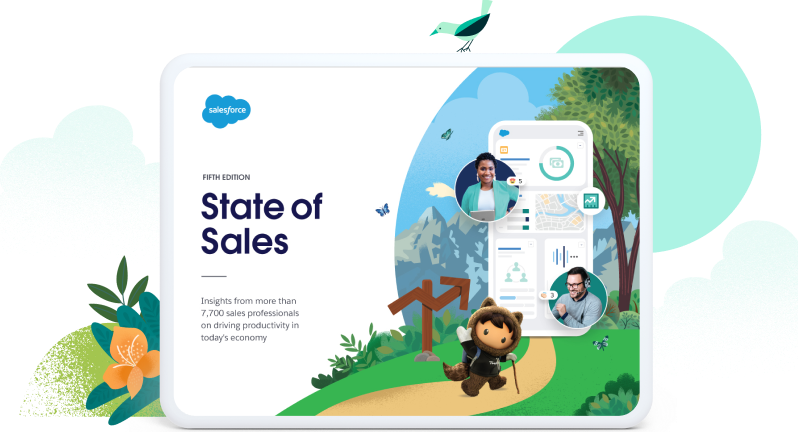Don’t believe the hype. Sales and Marketing Alignment isn’t hard. As long as you approach it in the right way, it’s easy, and (whisper it) even quite fun.
In our Sales and Marketing Alignment: Taking The First Step post, we looked at the first step towards fusing Sales and Marketing into a single, well-oiled machine—namely, sitting down together, and defining your ideal buyer.
Agreeing on who you’re selling to is a great—and essential—start. But very soon afterwards, you’ll also want to agree on when these people are ready to be sold to.
The question of ‘readiness’ is at the root of almost all discontent between sales and marketing teams.
Here’s what happens if you don’t settle that question early on…
You approach the end of the quarter, and Sales demands more leads as it races to meet its quota. Marketing feels the pressure and sends sales everything it’s got.
Some of these leads are sales-ready, but the vast majority are far from it. (Perhaps they’ve downloaded one e-book or attended an event. Two years ago.)
As trail after trail runs cold, Sales rapidly become disillusioned. It loses its faith in Marketing’s power and starts treating the leads that are coming its way with suspicion and contempt.
Marketing, in turn, starts to resent Sales for undervaluing its work—including the super-ready sales leads it’s just started sending through.
It’s an all too common scenario. And it’s incredibly easy to avoid. All you need to do is dig out that root of contention before it can bear such bitter fruit.
With this in mind, here’s our second step to simple Sales and Marketing alignment (no trowels required):
Define when a lead is really sales-ready
Remember that meeting room you lured your sales and marketing teams into during step #1? You’re going to need it again. And maybe up the ante regarding bait—we find the cake is usually a good call.
Once you’ve got your sales and marketing people back around the same table, it’s time to agree, once and for all, on the characteristics of a sales-ready lead.
But you’ll want to decide some other things too. Here’s a checklist:
1. Decide what your lead is doing or thinking at every funnel stage
Bearing in mind your ideal buyer persona, you should set down your hypothetical lead’s actions, thoughts and feelings as they progress from complete ignorance of your brand, to really interested in buying.
2. Decide what activity or behaviour shows they’ve moved to the next stage
Reading a whitepaper? Attending a webinar? Or two? It’s crucial to define the behaviours that’ll tell you a lead has moved from TOFU to MOFU, to BOFU (Top of Funnel, Middle of Funnel, Bottom of Funnel)
(If you’ve got a marketing automation system that lets you score leads based on profile and behaviour, and track them through the funnel, this kind of thing suddenly becomes a whole lot easier.)
3. Decide what aggregate behaviours indicate the prospect is ready to consider buying something
It’s the big one—agreeing on what a lead has to do to be considered sales-ready. The fact that you’re including both Sales and Marketing in this discussion will do wonders in terms of interdepartmental relations, helping to ensure sales doesn’t ever feel short-changed by the leads that come its way.
4. Decide how sales-ready leads will be handed over
Before you all take a second slice of cake and head triumphantly back to your desks, you’ll also want to decide how sales-ready leads should be handed over. Ideally, Marketing should be able to present a list of leads, some of which sales will accept, and some which it’ll decline. Integrated Sales and Marketing CRM systems can accelerate this process, by letting Sales see instantly when leads become ‘sales-ready’, and accept or decline them with a click.
5. Decide how leads will be handed back to Marketing if they’re not yet ready to buy
Despite how brilliantly you’ve plotted your lead’s journey through the funnel, there’ll always be some that, while their behaviours say they’re up to temperature, ultimately prove still a little too cool. While you’ve got everyone together, take a few moments to agree on the process for handing these leads back for a little more time in the marketing microwave.
One final, underlying goal of this Sales and Marketing get-together should be to foster a sense of mutual accountability for the well-being of your demand generation process:
- Marketing is accountable for the quantity, quality, and readiness of leads—and handling lead nurturing
- Sales for following up on them quickly, updating the CRM accurately, and passing them back to Marketing when necessary
To this end, be sure to get both teams to commit to a regular review of your pipeline.
And… you’re done. Take that second slice of cake, and savour the sweet taste of growing Sales and Marketing alignment.
But not for too long. If you’re to fully align Sales and Marketing, there are still three more steps to complete. The next step is to connect your marketing automation to your CRM.
(Or just dive straight into our ebook, Sales & Marketing Alignment Made Easy).
Get fresh insights from 7,700 sales professionals.
Dig into our latest report to learn how sales professionals are driving productivity and efficiency.

























